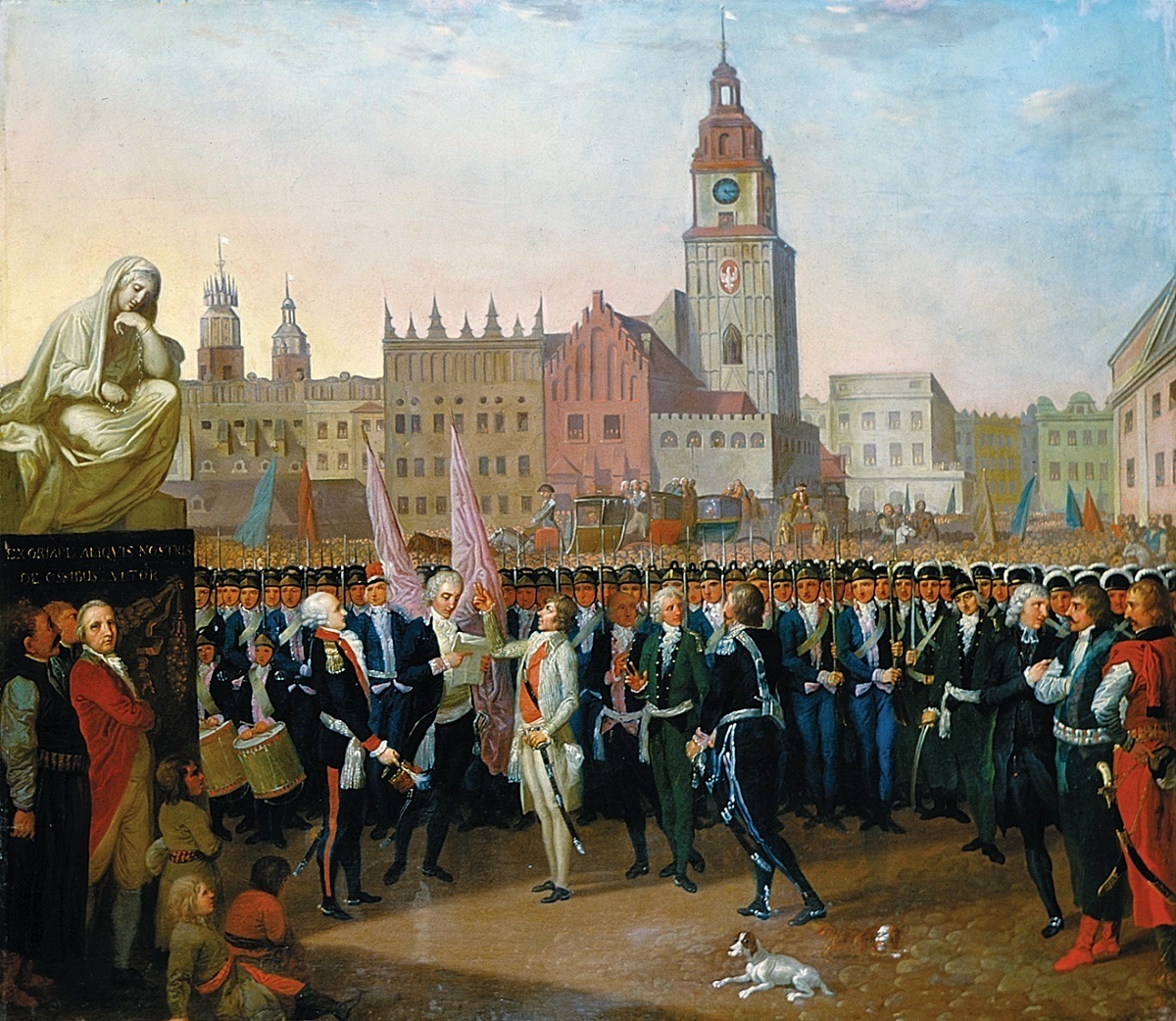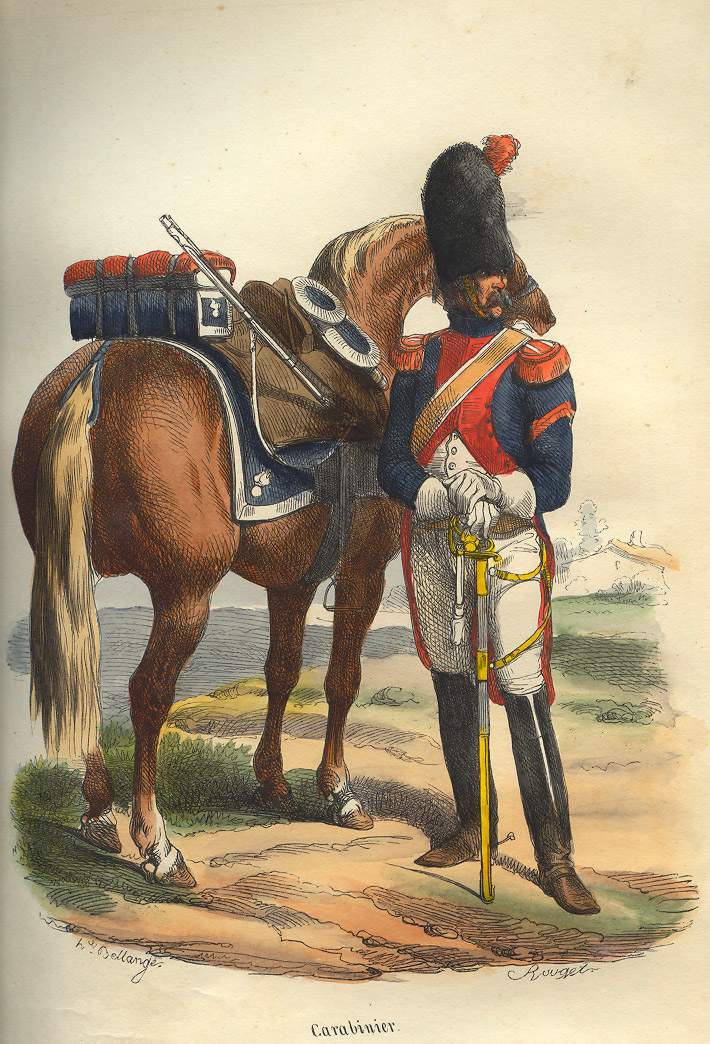|
Battle Of Kobyłka
The Battle of Kobyłka took place between the Russian Empire's armed forces under the leadership of Suvorov and Polish rebels under Stanisław Mokronowski north-east of Warsaw (at Kobyłka), on 26 October 1794. It was part of the Kościuszko Uprising and ended with the rebels' defeat. Battle When Suvorov received information from Stanisławów that the insurgent detachments were at Kobyłka and Okuniew, he immediately sent General Fersen's cavalry to Okuniew, and himself with 10,000 moved to Kobyłka. Polish forces of the Mokronowski's column were under General Meyen's command, but Meyen left his detachment at the very beginning and go to Warsaw; the Poles remained under the command of General Byszewski, adjutant-general of the Polish king. Russian General forced the Polish column to retreat in two separate sub-columns, which both laid down their arms; one of them, Colonel Wolan's, followed the forest road (the right flank; it surrendered first), and the other, Byszews ... [...More Info...] [...Related Items...] OR: [Wikipedia] [Google] [Baidu] |
Kościuszko Uprising
The Kościuszko Uprising, also known as the Polish Uprising of 1794, Second Polish War, Polish Campaign of 1794, and the Polish Revolution of 1794, was an uprising against the Russian and Prussian influence on the Polish–Lithuanian Commonwealth, led by Tadeusz Kościuszko in Poland-Lithuania and the Prussian partition in 1794. It was a failed attempt to liberate the Polish–Lithuanian Commonwealth from external influence after the Second Partition of Poland (1793) and the creation of the Targowica Confederation. Background Decline of the Commonwealth By the early 18th century, the magnates of Poland and Lithuania controlled the state – or rather, they managed to ensure that no reforms would be carried out that might weaken their privileged status (the " Golden Freedoms"). Through the abuse of the '' liberum veto'' rule which enabled any deputy to paralyze the Sejm (Commonwealth's parliament) proceedings, deputies bribed by magnates or foreign powers or those sim ... [...More Info...] [...Related Items...] OR: [Wikipedia] [Google] [Baidu] |
Column (military)
In military terminology, a column is a tactical formation of fighters moving together in one or more file (formation), files in which the file is significantly longer than the width of rank (formation), ranks in the formation. The column formation allows the unit rapid movement and a very effective charge (due to weight of numbers), and it can quickly Square (formation), form square to resist cavalry attacks, but by its nature only a fraction of its muskets are able to open fire. The Line (formation), line formation offers a substantially larger musket frontage than the column, allowing for greater shooting capability, but requires extensive training to allow the unit to move over ground as one while retaining the line. It is also applied by modern armies to vehicles, troops and naval vessels. Napoleonic Wars During the early stages of the French Revolutionary Wars, the French Army often attacked in column formation in an attempt to drive through enemy lines by sheer weight o ... [...More Info...] [...Related Items...] OR: [Wikipedia] [Google] [Baidu] |
Light Cavalry
Light cavalry comprised lightly armed and body armor, armored cavalry troops mounted on fast horses, as opposed to heavy cavalry, where the mounted riders (and sometimes the warhorses) were heavily armored. The purpose of light cavalry was primarily raid (military), raiding, reconnaissance, screening (tactical), screening, skirmishing, patrolling, and tactical communications. Prior to the 17th century they were usually armed with swords, spears, javelins, or bow and arrow, bows, and later on with Sabre, sabres, pistols, shotguns, or carbines. Light cavalry was used infrequently by Ancient Greece, Ancient Greeks (who used hippeis such as prodromoi or sarissophoroi) and Ancient Rome, Ancient Romans (who used auxiliaries (Roman military), auxiliaries such as Numidian cavalry, equites Numidarum or equites Maurorum), but were more common among the armies of Eastern Europe, North Africa, West Asia, Central Asia, and East Asia. The Arabs, Cossacks, Hungarian people, Hungarians, Hu ... [...More Info...] [...Related Items...] OR: [Wikipedia] [Google] [Baidu] |
Battalion
A battalion is a military unit, typically consisting of up to one thousand soldiers. A battalion is commanded by a lieutenant colonel and subdivided into several Company (military unit), companies, each typically commanded by a Major (rank), major or a Captain (armed forces), captain. The typical battalion is built from three operational companies, one weapons company and one headquarters company. In some countries, battalions are exclusively infantry, while in others battalions are unit-level organizations. The word ''battalion'' has its origins in the Late Latin word ''battalion'', which is derived from ''battalia'', meaning "battle" or "combat." The term was used to describe a large group of soldiers ready for battle. Over time, its meaning evolved in military terminology. The word "battalion" came into the English language in the 16th century from the French language, French , meaning "battle squadron" (similar to the Italian language, Italian meaning the same thing) and ... [...More Info...] [...Related Items...] OR: [Wikipedia] [Google] [Baidu] |
Jäger (infantry)
(; ; , ) is a German military term referring to specific light infantry units. In German-speaking states during the early modern era, the term ''jäger'' came to denote light infantrymen whose civilian occupations (mostly hunters and foresters) made them well-suited to patrolling and skirmishing, on an individual and independent basis, rather than as part of a large-scale military unit or traditional line infantry. As a consequence, ''jäger'' was used to describe skirmishers, scouts, sharpshooters and runners. The word's usage and derivatives broadened over time. For instance, was the name given by the Prussian Army to scouts and runners. Conversely, in the modern German army (), is the name given to military police. is usually translated into English as: * " rifleman" (in an infantry role) or "Rifles" (in regimental names); and * " ranger" (especially in North American English; see below). In English is often written as (both pl. and sgl., which is the alternat ... [...More Info...] [...Related Items...] OR: [Wikipedia] [Google] [Baidu] |
Cavalry
Historically, cavalry (from the French word ''cavalerie'', itself derived from ''cheval'' meaning "horse") are groups of soldiers or warriors who Horses in warfare, fight mounted on horseback. Until the 20th century, cavalry were the most mobile of the combat arms, operating as light cavalry in the roles of reconnaissance, Screening (tactical), screening, and skirmisher, skirmishing, or as heavy cavalry for decisive economy of force and shock attacks. An individual soldier in the cavalry is known by a number of designations depending on era and tactics, such as a cavalryman, Equestrianism, horseman, trooper (rank), trooper, cataphract, knight, Drabant Corps of Charles XII, drabant, hussar, uhlan, mamluk, cuirassier, lancer, dragoon, samurai or horse archer. The designation of ''cavalry'' was not usually given to any Military animal, military forces that used other animals or platforms for mounts, such as chariots, Camel cavalry, camels or War elephant, elephants. Infantry who m ... [...More Info...] [...Related Items...] OR: [Wikipedia] [Google] [Baidu] |
Flanking Manoeuvre
In military tactics, a flanking maneuver is a movement of an armed force around an enemy force's side, or flank, to achieve an advantageous position over it. Flanking is useful because a force's fighting strength is typically concentrated in its front, therefore, to circumvent an opposing force's front and attack its flank is to concentrate one's own offense in the area where the enemy is least able to concentrate defense. Flanking can also occur at the operational and strategic levels of warfare. Tactical flanking The flanking maneuver is a basic military tactic with several variations. Flanking an enemy entails attacking from one or more sides, at an angle to the enemy's direction of engagement. There are three standard flanking maneuvers. The first maneuver is the ambush, where a unit performs a surprise attack from a concealed position. Units friendly to the ambushing unit may be hidden to the sides of the ambush site to surround the enemy, but care must be taken w ... [...More Info...] [...Related Items...] OR: [Wikipedia] [Google] [Baidu] |
Regiment
A regiment is a military unit. Its role and size varies markedly, depending on the country, military service, service, or administrative corps, specialisation. In Middle Ages, Medieval Europe, the term "regiment" denoted any large body of line regiment, front-line soldiers, recruited or conscripted in one geographical area, by a leader who was often also the feudal lord ''in capite'' of the soldiers. Lesser barons of knightly rank could be expected to muster or hire a Company (military unit), company or battalion from their manorial estate. By the end of the 17th century, infantry regiments in most European armies were permanent units, with approximately 800 men and commanded by a colonel. Definitions During the modern era, the word "regiment" – much like "corps" – may have two somewhat divergent meanings, which refer to two distinct roles: # a front-line military formation; or # an administrative or ceremonial unit. In many armies, the first role has been assumed by i ... [...More Info...] [...Related Items...] OR: [Wikipedia] [Google] [Baidu] |
Cossack
The Cossacks are a predominantly East Slavic Eastern Christian people originating in the Pontic–Caspian steppe of eastern Ukraine and southern Russia. Cossacks played an important role in defending the southern borders of Ukraine and Russia, countering the Crimean-Nogai raids, alongside economically developing steppe regions north of the Black Sea and around the Azov Sea. Historically, they were a semi-nomadic and semi-militarized people, who, while under the nominal suzerainty of various Eastern European states at the time, were allowed a great degree of self-governance in exchange for military service. Although numerous linguistic and religious groups came together to form the Cossacks, most of them coalesced and became East Slavic–speaking Orthodox Christians. The rulers of the Polish–Lithuanian Commonwealth and Russian Empire endowed Cossacks with certain special privileges in return for the military duty to serve in the irregular troops: Zaporozhian Cossac ... [...More Info...] [...Related Items...] OR: [Wikipedia] [Google] [Baidu] |
French Emigration (1789–1815)
French emigration from the years 1789 to 1815 refers to the mass movement of citizens from France to neighboring countries, in reaction to the instability and upheaval caused by the French Revolution and the succeeding Napoleonic rule. Although initiated in 1789 as a peaceful effort led by the Bourgeoisie to increase political equality for the Third Estate (the unprivileged majority of the French people), the Revolution soon turned into a violent, popular movement. To escape political tensions and, mainly during the Reign of Terror, to save their lives, a number of individuals emigrated from France and settled in the neighboring countries (chiefly Great Britain, Austria, and Prussia or other German states), though a few also went to the Americas. Revolution begins When the Estates General convened in May 1789 and aired out their political grievances, many members of each estate found themselves in agreement with the idea that the bulk of France, the Third Estate, was carryin ... [...More Info...] [...Related Items...] OR: [Wikipedia] [Google] [Baidu] |
Carabineers
A carabinier (also sometimes spelled carabineer or carbineer) is in principle a soldier armed with a carbine, musket, or rifle, which became commonplace by the beginning of the Napoleonic Wars in Europe. The word is derived from the identical French word ''carabinier''. Historically, carabiniers were generally (but not always) horse soldiers. The carbine was considered a more appropriate firearm for a horseman than a full-length musket, since it was shorter in length, weighed less, and was easier to manipulate on horseback. Light infantry sometimes carried carbines because they are less encumbering when moving rapidly, especially through vegetation, but in most armies the tendency was to equip light infantry with longer-range weapons such as rifles rather than shorter-range weapons such as carbines. In Italy and Spain, carbines were considered suitable equipment for soldiers with policing roles, so the term ''carabinier'' evolved to sometimes denote gendarmes and border guards. ... [...More Info...] [...Related Items...] OR: [Wikipedia] [Google] [Baidu] |






